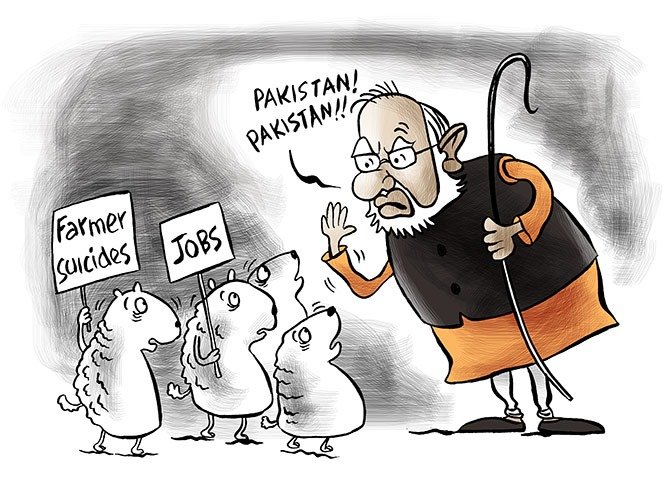![]() By Shah J. Choudhury: The wave of youth euphoria that Narendra Modi rode since 2014 appears to be ebbing. Six years into the Modi government, India’s youth appears disappointed and frustrated, according to the latest survey data accessed by us.
By Shah J. Choudhury: The wave of youth euphoria that Narendra Modi rode since 2014 appears to be ebbing. Six years into the Modi government, India’s youth appears disappointed and frustrated, according to the latest survey data accessed by us.
Without economic growth and jobs, how potent is Modi’s appeal to the youth? Will they be satisfied just with the politics of Hindutva and endless cultural wars?
Modi’s national appeal to the youth began in 2013 with his speech at Shri Ram College of Commerce, University of Delhi. He won them over with the promise of a new era of economic development that he said will fulfil their teeming aspirations. But now, there has been a breach in the wall.
A majority of young people believe the economy is going in the wrong direction, according to Mint YouGov CPR survey. As many as 46 per cent of Gen Z and 44 per cent of millennials are worried about the direction of the economy, compared to just 31 per cent of Gen Z and 36 per cent of millennials, who are satisfied with the direction of the economy. This is in contrast to older people, who display net satisfaction with the economy, albeit very marginally.
Anecdotally too, quite a few educated youngsters who backed Modi earlier, now openly express their frustration at the mismanagement of the economy and the constant emphasis on polarising issues. It is then not surprising that the youngest cohort (18-25) in Delhi elections was the age segment most likely to vote for the Aam Aadmi Party (AAP) over the nakedly communal politics of the BJP.
This youth disaffection with the prevailing state of the country has been building up for some time now. There are two reasons for this.
First, the state of the economy. A government survey released last year suggested that 33 per cent of India’s skilled youth is jobless. This was also reflected in a March 2019 Lokniti poll that found unemployment to be the single-biggest political issue for voters. Then, Balakot happened, which swayed the youth back to the Bharatiya Janata Party’s camp.
The economic catastrophe brought on by Covid-19 and lockdown has further battered the youth, who are majorly employed in the less secure informal sector. As many as 27 million people between the age of 20 and 30 lost their jobs in the month of April alone, according to data from CMIE. Much of young India today is mired in uncertainty, having seen their colleges close, new opportunities vanish, and even existing ones in increasing peril.
When the youth had got disaffected with the Congress at the fag end of UPA 2, a charming new suitor—Modi–pounced and swept them away. That suitor has now lost both his novelty and sheen, and the young appear disaffected again, but there are no new suitors on the stage.
























